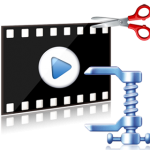 I’ve written a couple of times about the increasing capacity for machines to understand and appreciate images. For instance, the Visual Genome was developed by professors at the Stanford Artificial Intelligence Lab and aims to tackle some of the toughest questions in computer vision, with the eventual goal of developing machines that can understand what it sees.
I’ve written a couple of times about the increasing capacity for machines to understand and appreciate images. For instance, the Visual Genome was developed by professors at the Stanford Artificial Intelligence Lab and aims to tackle some of the toughest questions in computer vision, with the eventual goal of developing machines that can understand what it sees.
Likewise, engineers at Google have been working on a project, called PlaNet, which trained a neural network to give a good guess as to where in the world an image was taken.
Modelling visual information
British startup Magic Pony Technology are aiming to take things a step further by building a machine learning based algorithm to enable computers to model visual information.
The team have developed a mechanism whereby high quality images can be rendered from low quality versions of the same image. The approach is incredibly clever, and sees a lower generation version of an image fed to the machine alongside the normal version. It then compares the difference between the two, and can then perform the trick in reverse.
The founders believe that the method could be particularly valuable in the streaming industry, where video compression remains crucial to its success. They suggest that the deep learning approach they’ve mastered can prove to be invaluable in reducing the need for such compression rates.
Likewise, they believe that the technology could help improve the quality of images captured on smartphones where a combination of low-resolution cameras and low lighting can result in poor quality pictures.
What’s more, unlike the Google method mentioned above, the Magic Pony method doesn’t require humans to label the images manually, but can instead do the job using pattern recognition to teach itself.
The approach is being documented in a paper that will be presented at this year’s Computer Vision conference, and the very act of writing the paper has further helped to refine the approach.
It’s certainly a fascinating approach that should prove well worth keeping an eye on.